Stacking up: Martin Creed's anti-materialistic use of everyday objects
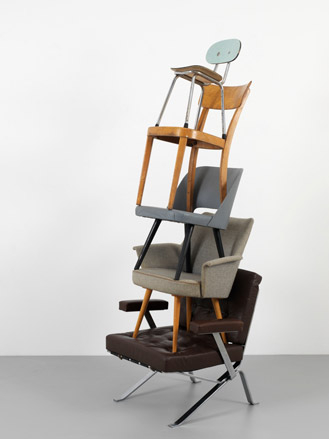
Martin Creed's work has a strangely exciting monotony. Whether it involves a lone runner tearing around Tate Britain every 30 seconds or a light turning on and off (scoring him the Turner Prize 2001), the artist delights in repetition, with extraordinary results. This time, at Edinburgh's Fruitmarket Gallery, he has created a series of stacked objects, created from chairs, tables and pieces of lego. What could be a laborious body of work is instead a witty and anti-materialistic use of everyday objects.
Why this insistence on repetition? 'I've often consciously tried to make my work more like music,' says Creed in a new tome on the artist by Thames & Hudson. 'Rhythm, whether musical or visual, is a comfort.'
Elsewhere in the gallery, the Scotsman has turned a staircase into a synthesiser, with each step sounding a different note as visitors walks up or down it. This echoes his larger new public sculpture - a renovation of part of Edinburgh's Scotsman Steps in contrasting marbles - to be unveiled later this year.
The Fruitmarket Gallery is also showing Creed's film, Work No. 732 – in which the artist kicks over a group of plants in a moment of angst - on the nearby BBC Big Screen Edinburgh. And it has teamed up with Sadler's Wells to present Creed's ballet, Work No. 1020, at the Traverse Theatre as part of the Edinburgh Festival Fringe. Based around the five positions in ballet and the notes of the musical scale, with dancers and a live band (including Creed himself), it is another amusing and thoughtful play on everyday order.
Published alongside the exhibition, Thames & Hudson's epic new monograph on the artist includes nearly 600 works - almost his entire oeuvre - as well as commentary by the likes of Colm Tóibín, Germaine Greer and Barry Humphries. Emblazoned on its spine is an extraordinary declaration from the artist:
'I fear this book
I dare not look
As bit by bit
I trawl my shit.
I don't think I want to make a book of my work. I am scared to look at what I have done in case I don't like it.'
Presumably, several hundred pages later, this sense of trepidation has passed.
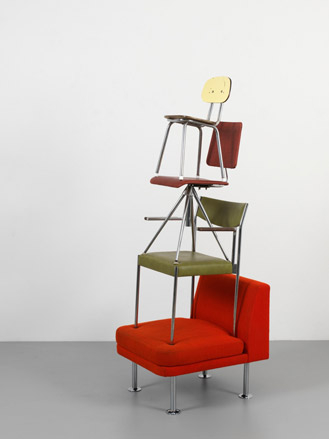
'Work No. 997A' by Martin Creed, 2009. Courtesy of the artist and Hauser & Wirth

Work No. 928' by Martin Creed, 2008.

'Work No. 932' by Martin Creed, 2008. Courtesy of the artist and Hauser & Wirth
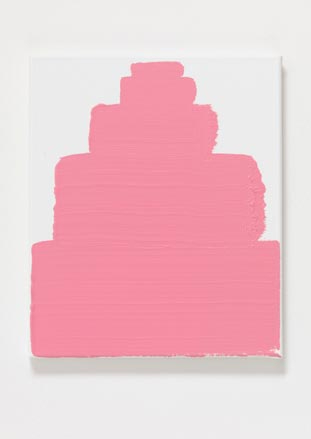
'Work No. 930' by Martin Creed, 2008 courtesy of the artist and Hauser & Wirth

'Work No. 508' by Martin Creed, 2006. Courtesy of the artist and a private collection in Zurich
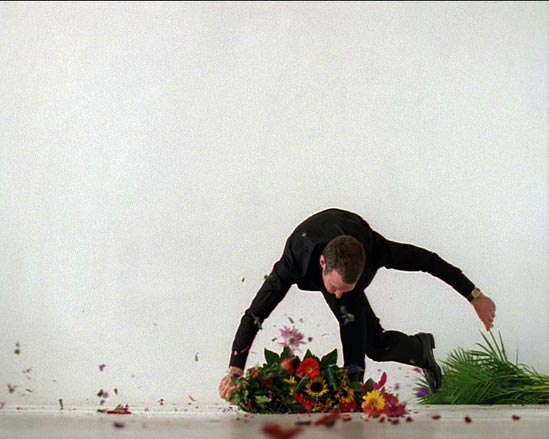
'Work No. 732: Kicking Flowers' by Martin Creed, 2007. The film will be shown on the BBC Big Screen Edinburgh, in Festival Square for the duration of the exhibition.

'Work No. 792' by Martin Creed, 2007. Courtesy of the artist and Hauser & Wirth
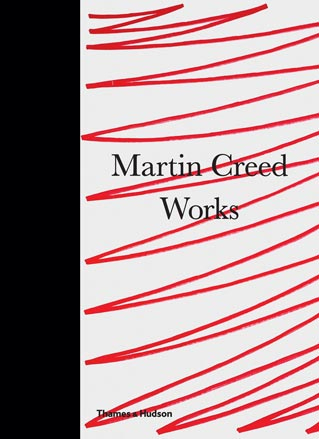
Cover of Martin Creed: Works, published by Thames & Hudson
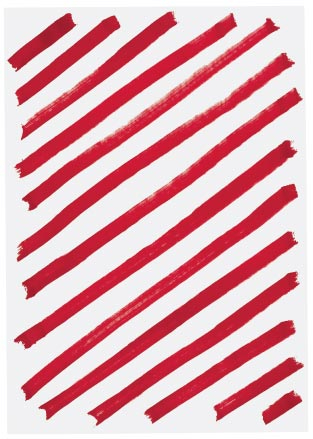
'Work No. 447' by Martin Creed, 2005. Courtesy of the artist

'Work No. 300: the whole world + the work = the whole world' by Martin Creed, 2003.

'Work No. 79' by Martin Creed.
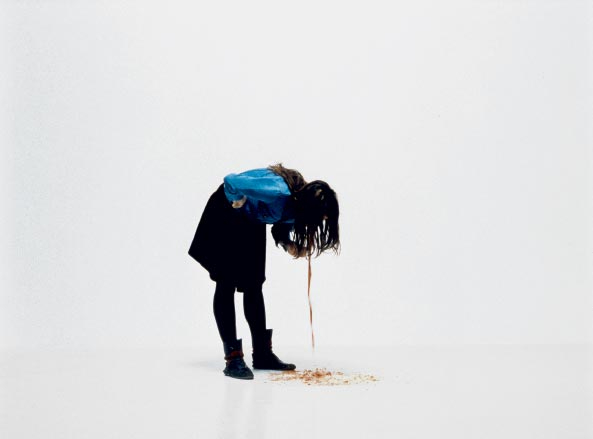
'Work No. 509' by Martin Creed, 2006.
Receive our daily digest of inspiration, escapism and design stories from around the world direct to your inbox.
Malaika Byng is an editor, writer and consultant covering everything from architecture, design and ecology to art and craft. She was online editor for Wallpaper* magazine for three years and more recently editor of Crafts magazine, until she decided to go freelance in 2022. Based in London, she now writes for the Financial Times, Metropolis, Kinfolk and The Plant, among others.
-
 In Norway, remoteness becomes the new luxury
In Norway, remoteness becomes the new luxuryAcross islands and fjords, a new wave of design-led hideaways is elevating remoteness into a refined, elemental form of luxury
-
 The rising style stars of 2026: Oscar Ouyang is taking knitwear into new realms
The rising style stars of 2026: Oscar Ouyang is taking knitwear into new realmsAs part of the January 2026 Next Generation issue of Wallpaper*, we meet fashion’s next generation. Born in Beijing, Central Saint Martins graduate Oscar Ouyang is inspired by anime, medieval folklore and his friends’ wardrobes
-
 Zbeul Studio's 'future relics' merge traditional craft with unexpected materials
Zbeul Studio's 'future relics' merge traditional craft with unexpected materialsWallpaper* Future Icons: Paris-based studio Zbeul merges archaeology, craft, and design, taking the design process to innovative places
-
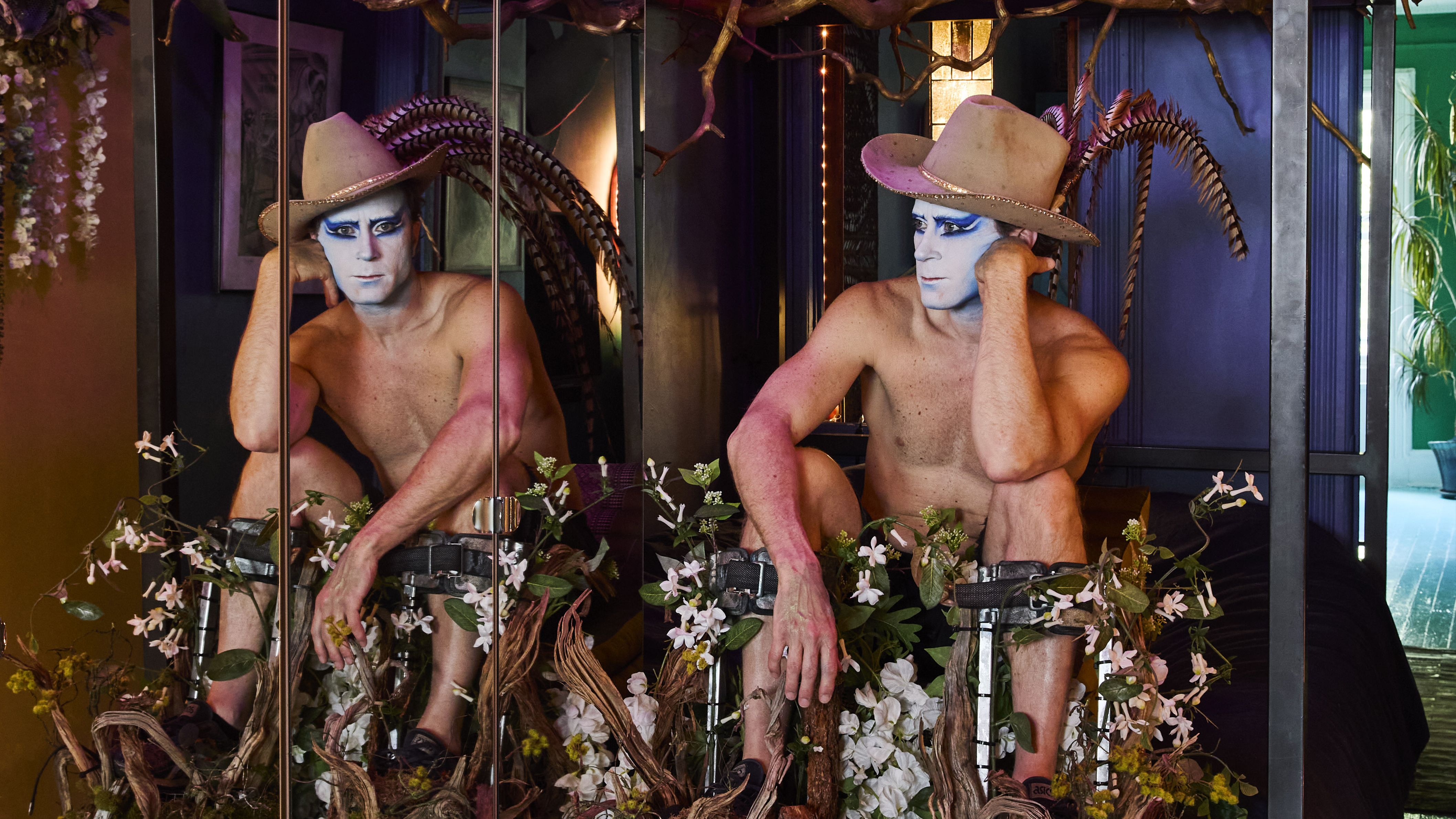 Inside the fantastical world of performance artist, Darrell Thorne
Inside the fantastical world of performance artist, Darrell ThornePerformance artist Darrell Thorne straddles multiple worlds, telling stories through transformation, reinvention and theatrical excess
-
 Remote Antarctica research base now houses a striking new art installation
Remote Antarctica research base now houses a striking new art installationIn Antarctica, Kyiv-based architecture studio Balbek Bureau has unveiled ‘Home. Memories’, a poignant art installation at the remote, penguin-inhabited Vernadsky Research Base
-
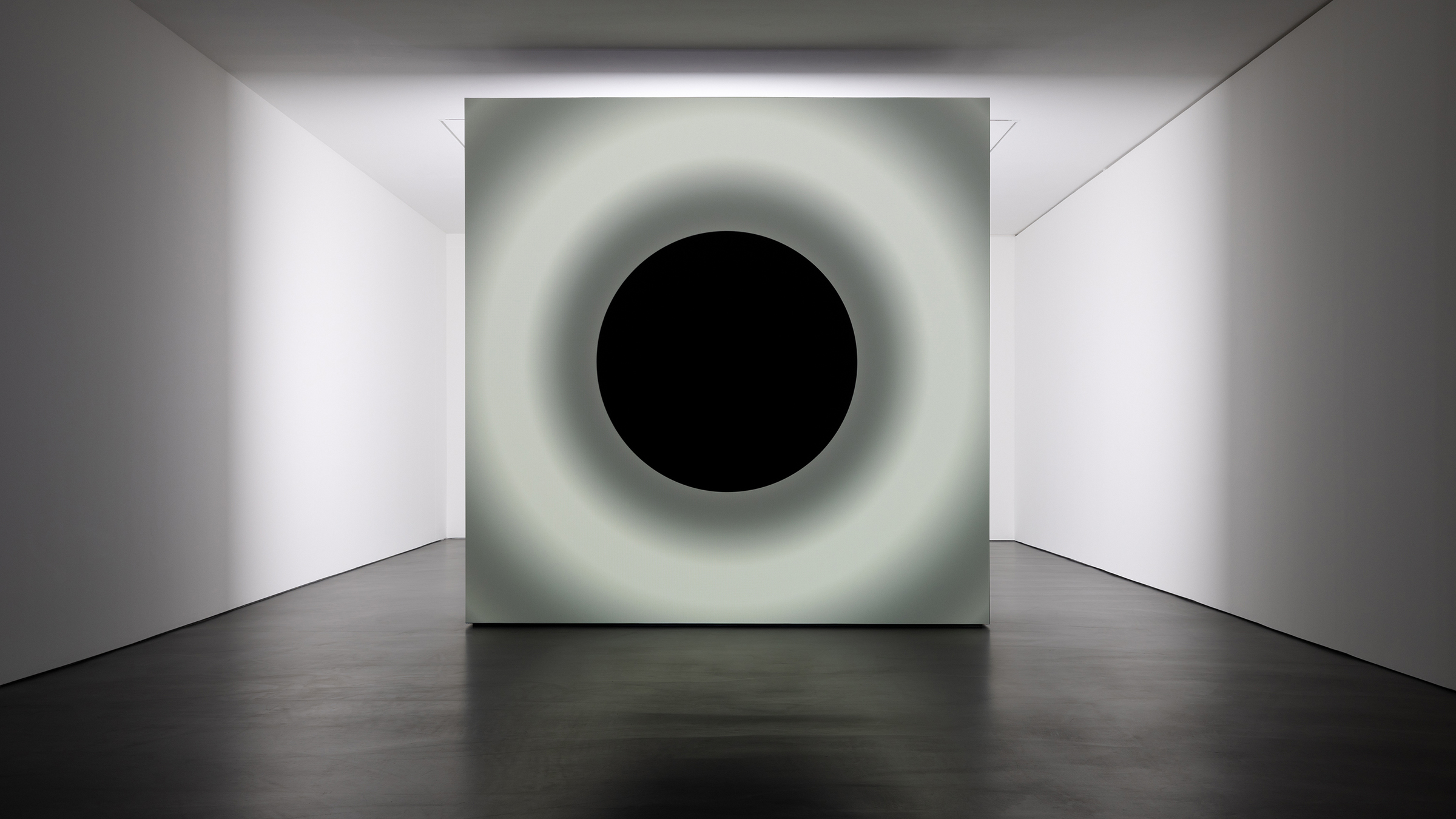 Ryoji Ikeda and Grönlund-Nisunen saturate Berlin gallery in sound, vision and visceral sensation
Ryoji Ikeda and Grönlund-Nisunen saturate Berlin gallery in sound, vision and visceral sensationAt Esther Schipper gallery Berlin, artists Ryoji Ikeda and Grönlund-Nisunen draw on the elemental forces of sound and light in a meditative and disorienting joint exhibition
-
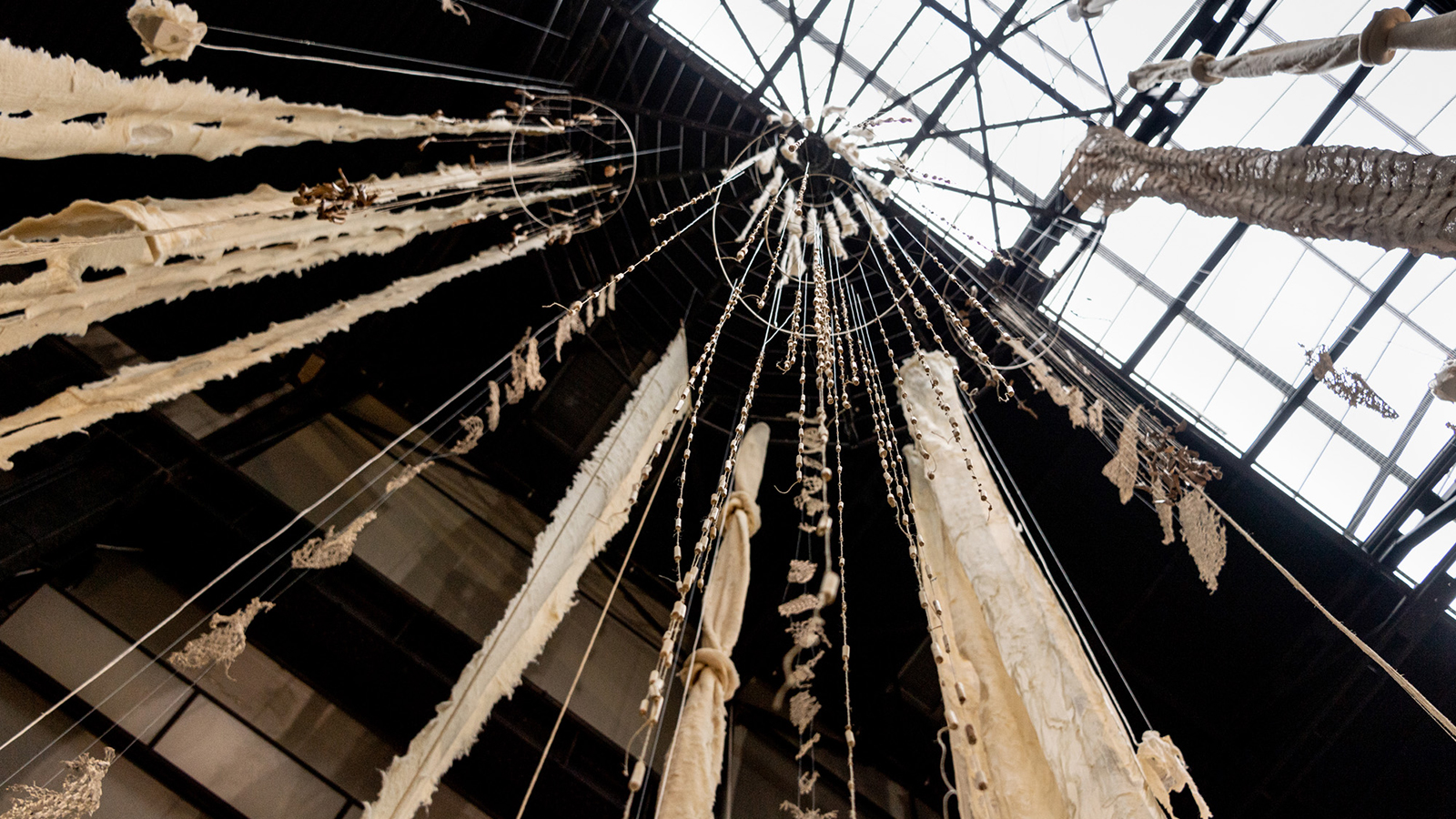 Cecilia Vicuña’s ‘Brain Forest Quipu’ wins Best Art Installation in the 2023 Wallpaper* Design Awards
Cecilia Vicuña’s ‘Brain Forest Quipu’ wins Best Art Installation in the 2023 Wallpaper* Design AwardsBrain Forest Quipu, Cecilia Vicuña's Hyundai Commission at Tate Modern, has been crowned 'Best Art Installation' in the 2023 Wallpaper* Design Awards
-
 Michael Heizer’s Nevada ‘City’: the land art masterpiece that took 50 years to conceive
Michael Heizer’s Nevada ‘City’: the land art masterpiece that took 50 years to conceiveMichael Heizer’s City in the Nevada Desert (1972-2022) has been awarded ‘Best eighth wonder’ in the 2023 Wallpaper* design awards. We explore how this staggering example of land art came to be
-
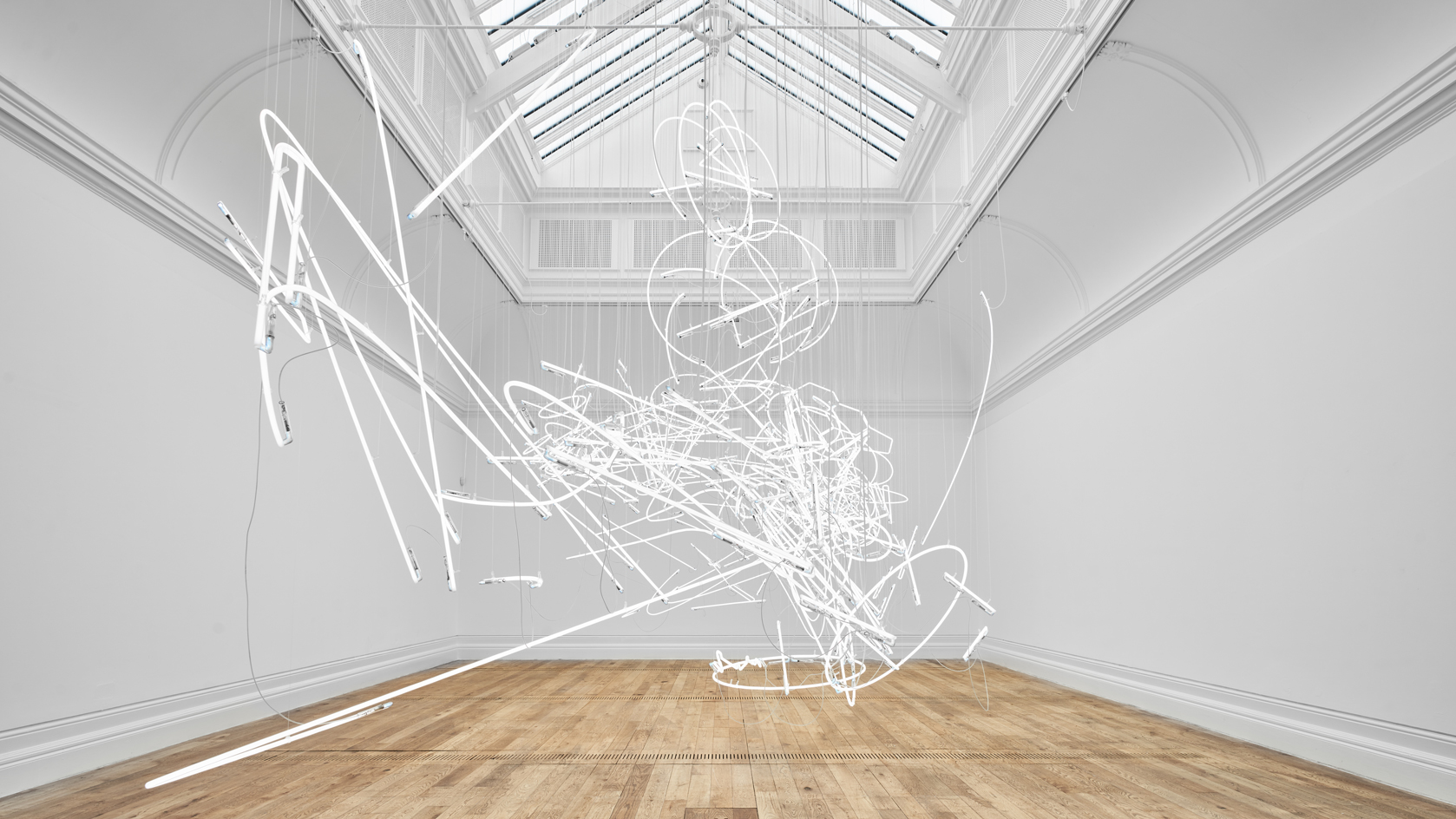 Cerith Wyn Evans: ‘I love nothing more than neon in direct sunlight. It’s heartbreakingly beautiful’
Cerith Wyn Evans: ‘I love nothing more than neon in direct sunlight. It’s heartbreakingly beautiful’Cerith Wyn Evans reflects on his largest show in the UK to date, at Mostyn, Wales – a multisensory, neon-charged fantasia of mind, body and language
-
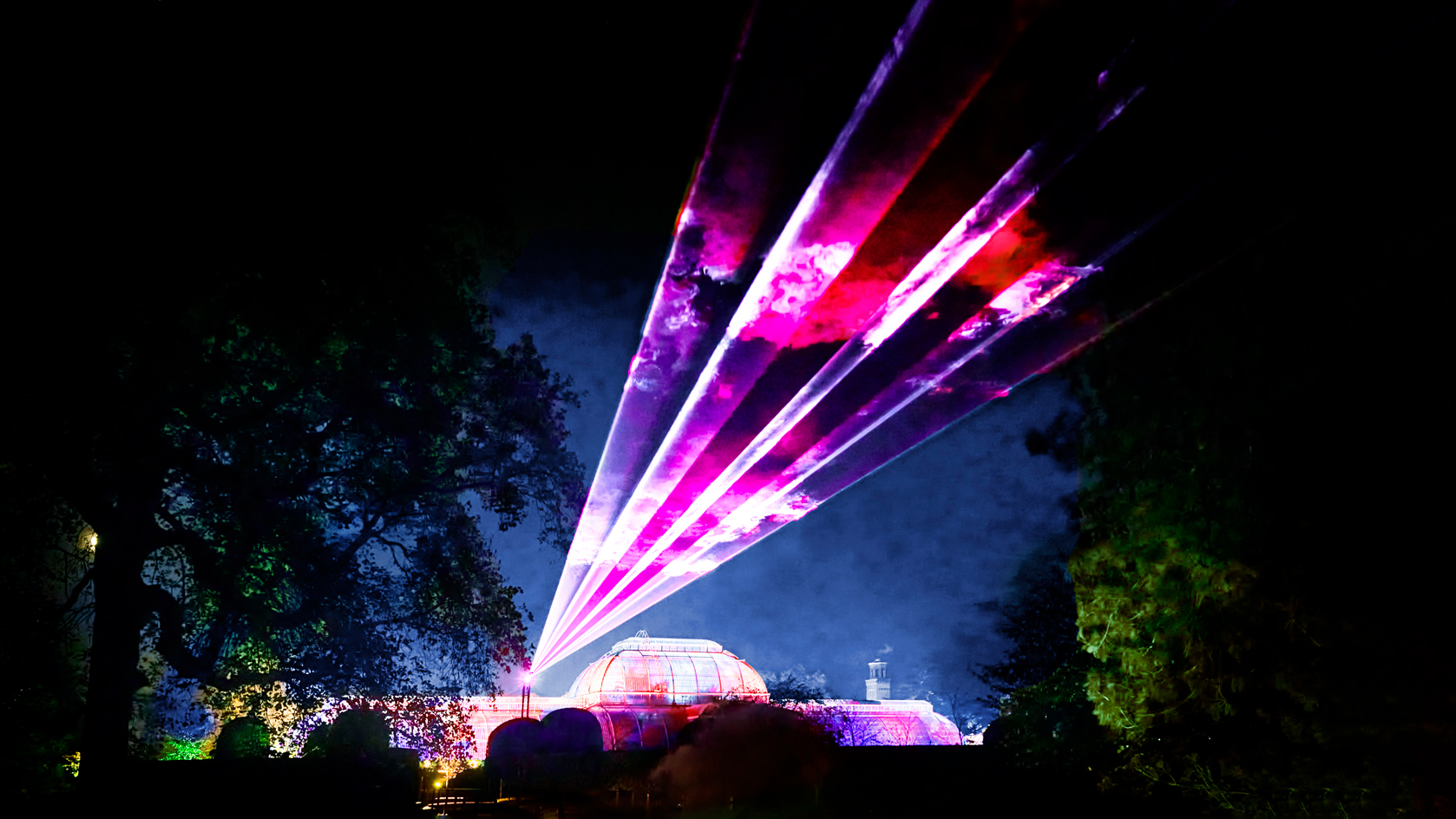 The best 7 Christmas installations in London for art lovers
The best 7 Christmas installations in London for art loversAs London decks its halls for the festive season, explore our pick of the best Christmas installations for the art-, design- and fashion-minded
-
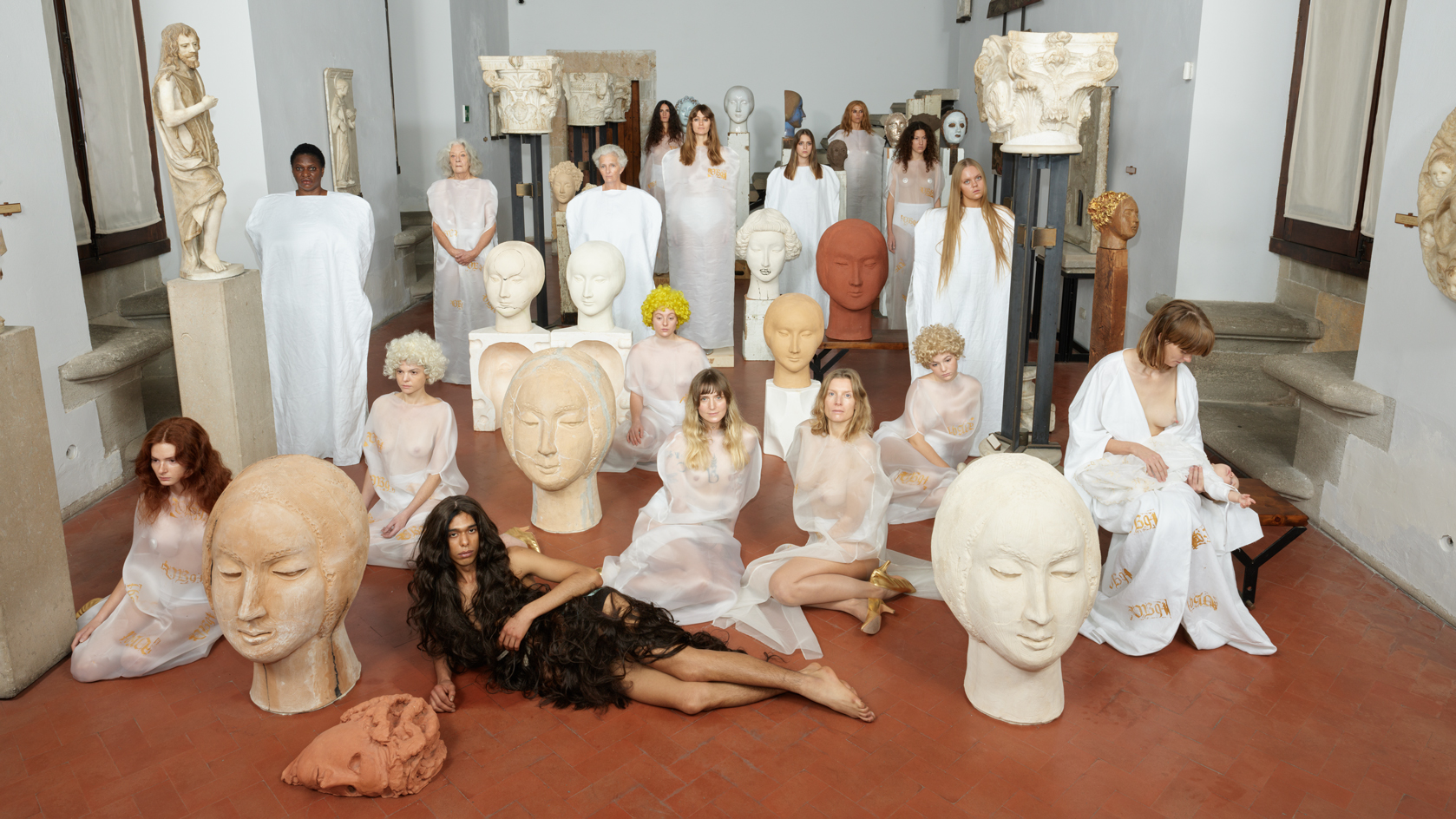 Vanessa Beecroft’s ethereal performance and sculpture exhibition explore Sicily’s cultural history
Vanessa Beecroft’s ethereal performance and sculpture exhibition explore Sicily’s cultural historyAt the historic Palazzo Abatellis, Sicily, Vanessa Beecroft has unveiled ‘VB94’, a new tableau vivant comprising a one-time performance and a new series of sculptures, the latter on view until 8 January